Despite growing awareness, “nature conservation” is often misunderstood or seen as a niche concern, disconnected from daily life or global priorities. In reality, conservation is one of the most powerful tools we have to safeguard the planet and our future.
But what exactly does nature conservation mean?
.
Conservation vs. Preservation
At its core, nature conservation is the responsible management of ecosystems, species, and landscapes to ensure their survival and function for generations to come. This includes protecting intact forests, restoring degraded habitats, and maintaining vital ecological processes like pollination, clean water cycles, and soil regeneration.
Conservation is about balance. Unlike preservation—which aims to leave nature completely untouched—conservation often requires active, science-based interventions to maintain biodiversity and ecosystem services, especially in landscapes already altered by human activity.
Crucially, conservation only works when people are part of the solution.
“Effective community-based natural resource governance requires legitimate leadership—people who act in the group’s long-term interest. Conservation doesn’t mean closing forests entirely, but managing responsible use to maintain biodiversity and ecosystem health,” says Olivier Standaert, Director of Global Programs at WeForest.
Why nature conservation matters
Nature conservation provides a series of benefits to all of us. They include:
- Provisioning services: Millions of people—especially in rural communities—depend directly on nature for food, water, medicine, and income.
- Regulating services: Forests, wetlands, oceans, and grasslands act as natural carbon sinks. Conserving these ecosystems is key to regulating the Earth’s climate.
- Supporting services: Healthy ecosystems provide nutrient cycling, primary production, soil formation, and habitat provision. Those are essential for clean air, fresh water, fertile soils, and resilience against disasters like floods and droughts—services we often take for granted until they’re gone
- Cultural services: Nature conservation is also important for landscape aesthetics, cultural heritage, outdoor recreation, tourism and spiritual significance.

From exclusion to inclusion: New models of conservation
Historically, many conservation efforts were top-down, excluding Indigenous peoples and local communities. These “fortress conservation” models often led to conflict, failure, and even human rights abuses.
Today, there’s growing recognition that effective conservation requires inclusion and equity.
Modern strategies prioritize community-led conservation, blending traditional ecological knowledge with scientific expertise. Respecting local governance, land rights, and benefit-sharing is now seen not just as ethical, but essential for lasting impact.
WeForest, for example, works to balance ecosystem restoration in a way that is respectful and considerate of the landscape history as well as local social, cultural, economic and ecological values and needs. By reducing dependence on forest resources and involving local people in governance, our projects build long-term foundations for conservation success.
“Conservation projects can restore the balance between forest protection and community development by offering alternatives to reduce reliance on forest resources and involving communities in decision-making,” says Olivier Standaert.

Conservation in action
Conservation looks different in every landscape. It can mean creating protected areas, establishing sustainable land-use systems, or creating new local sustainable businesses. Here are three nature conservation models:
Lavushimanda, Zambia: Traditional leadership in action
In the Miombo woodlands of Zambia’s Lavushimanda, traditional leaders play a key role in forest stewardship. Backed by a strong legal framework—including the Forest Act and Community Forest Management Regulations—local groups are empowered to manage their resources. Traditional leaders grant consent for interventions and influence land-use decisions.
However, challenges persist: poverty, land sales, and weak governance threaten long-term success. Still, community and leadership commitments—like setting aside land for conservation—show a growing shift toward local ownership of environmental outcomes.
If you are interested to learn the role of local chief on conservation, check this interview.
Wof Washa, Ethiopia: Integrated restoration
In Ethiopia’s dry Afromontane Wof Washa forest, conservation efforts go beyond protecting the trees. Grassland restoration, farmland improvements, and energy-efficient technologies are diverse approaches reducing pressure on forest resources. The strategy is rooted in community-based forest management, with local groups creating rules, enforcement mechanisms, and long-term plans, which includes the creation of a new National Park.
Learn about community-based forest management in this interview (coming soon)
Mount Mulanje, Malawi: Conservation that pays
Mount Mulanje, now a UNESCO World Heritage, showcases a powerful model of community-centered conservation of the Miombo woodlands on the lower slope of the mountain. Local communities manage village forest areas outside the main reserve, with 70% of income from forest-related activities flowing back to them.
Village-level bank accounts allow communities (and women) to manage their earnings, invest in local development, and build resilience. This model demonstrates that nature conservation is effective in securing futures.
Explore this community-centered conservation model in this interview (coming soon)
A global priority
Nature conservation is now at the center of climate talks. International agreements like the Kunming-Montreal Global Biodiversity Framework and the UN Sustainable Development Goals recognize that healthy ecosystems are foundational to climate stability, economic resilience, and human wellbeing.
One of the most widely used conservation tools is the protected area. These come in various categories depending on use, from strict reserves to landscapes where people and nature coexist. The IUCN (International Union for Conservation of Nature) outlines seven broad categories:
- Strict Nature Reserve – Minimal human activity, scientific research only.
- Wilderness Area – Large, undisturbed landscapes.
- National Park – Conservation with public access and education.
- Natural Monument – Protects specific natural features.
- Habitat/Species Management Area – Focus on specific species or ecosystems.
- Protected Landscape/Seascape – Traditional interaction between people and nature.
- Sustainable Use Area – Managed resource use aligned with conservation.
Effective conservation governance has evolved from exclusionary models to approaches that prioritize partnerships with Indigenous peoples and local communities. WeForest’s landscape restoration framework demonstrates how balancing ecosystem protection with community needs can create sustainable outcomes.
Today’s conservation toolbox ranges from IUCN-classified protected areas (Categories 1-7) to Other Effective Area-Based Conservation Measures (OECMs) – recognizing community-led efforts outside formal reserves. As these diverse models show, successful conservation requires both ecological integrity and social equity. The critical question now is how global agreements like the Kunming-Montreal Framework can better support and scale these integrated approaches for greater impact.
Want to contribute to nature conservation in action?
Reach out—we’ll work with you to build a custom solution.













